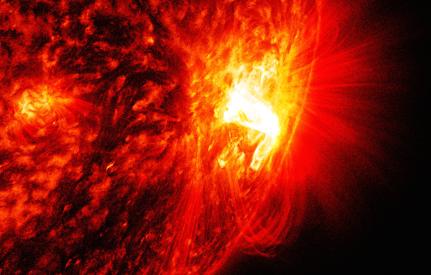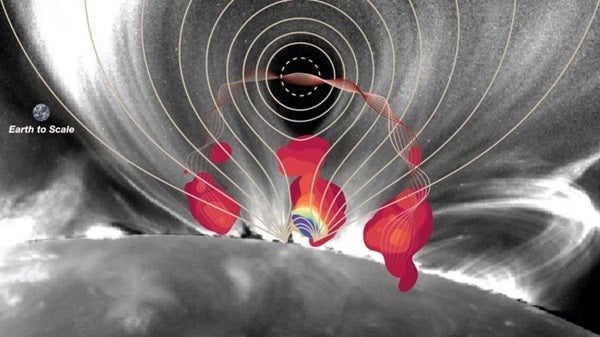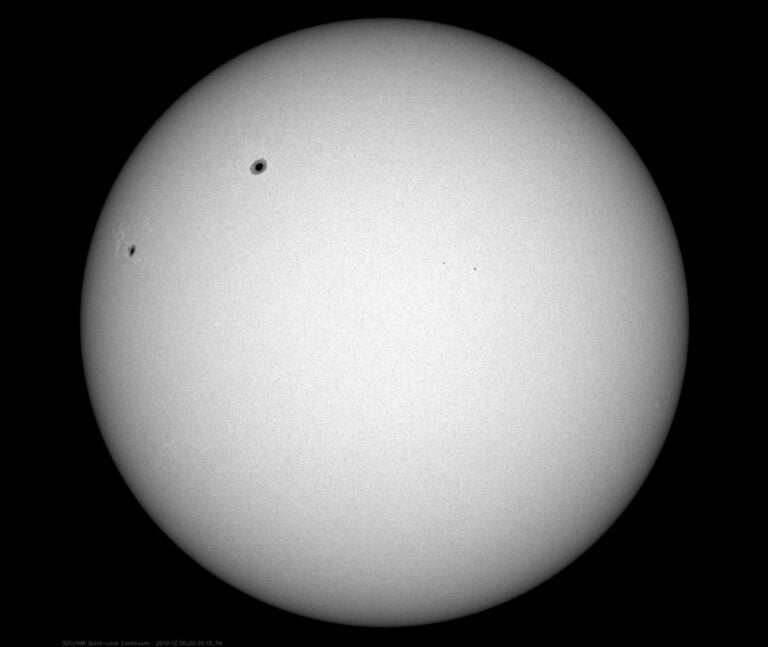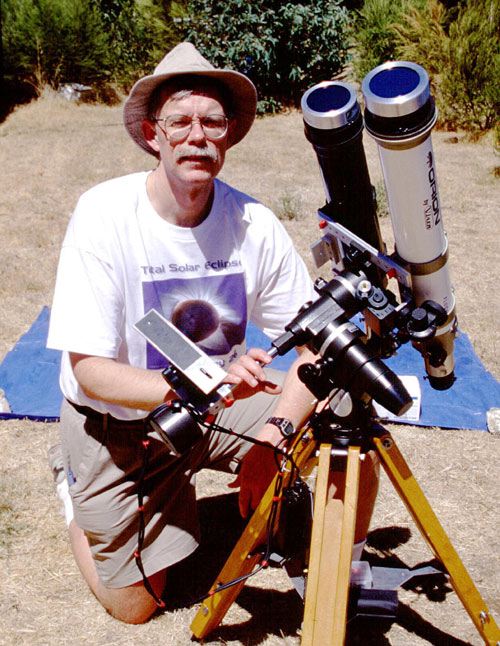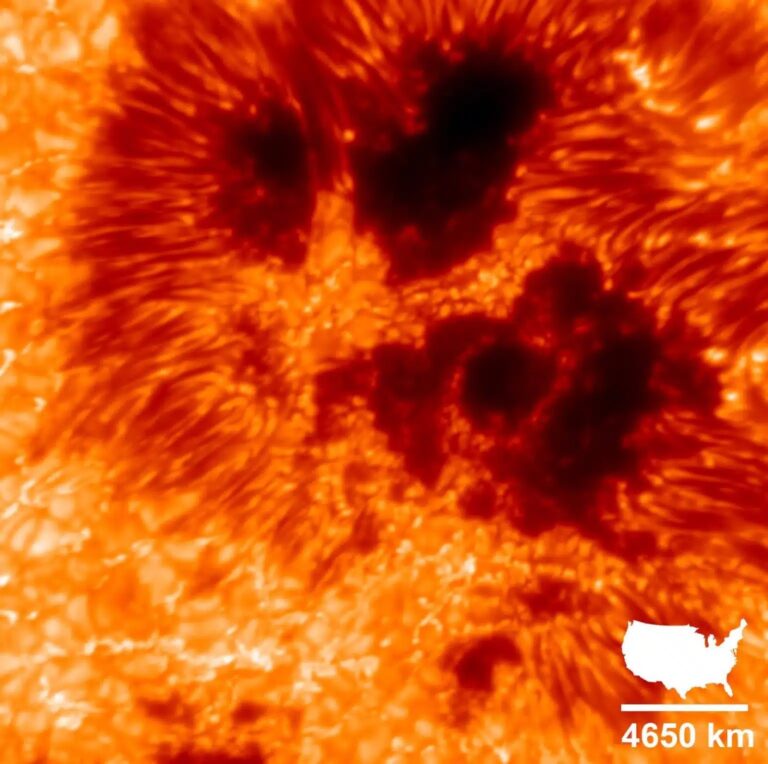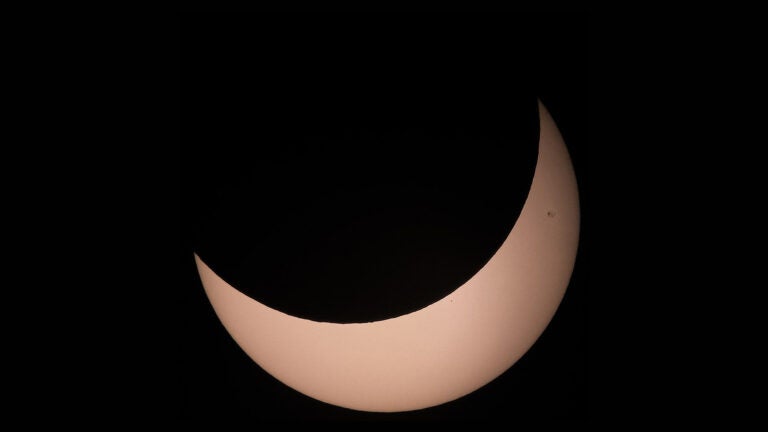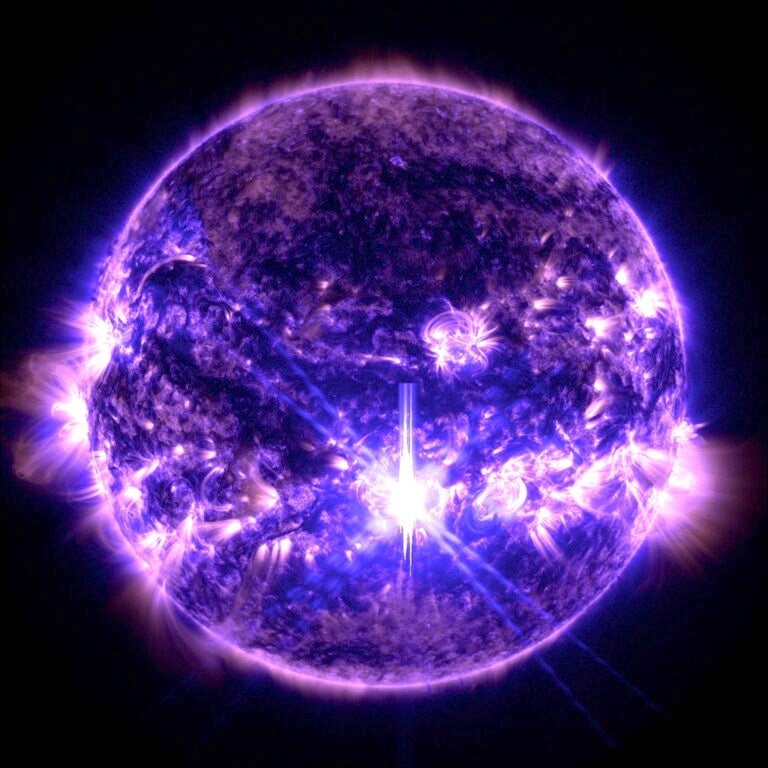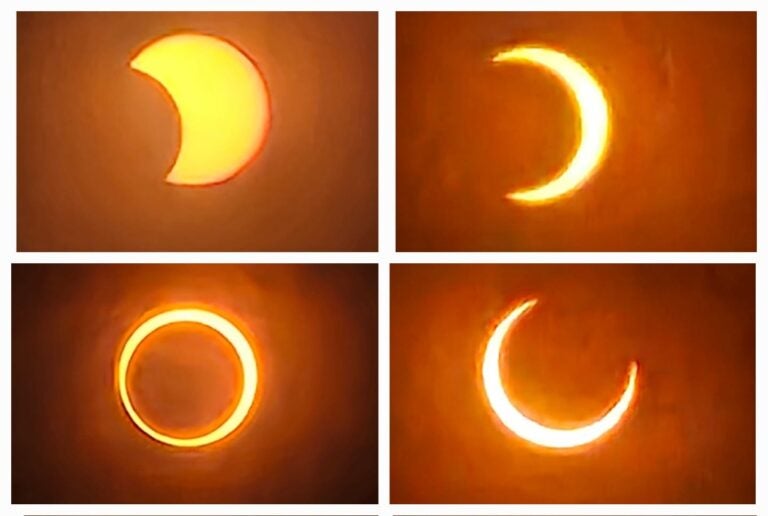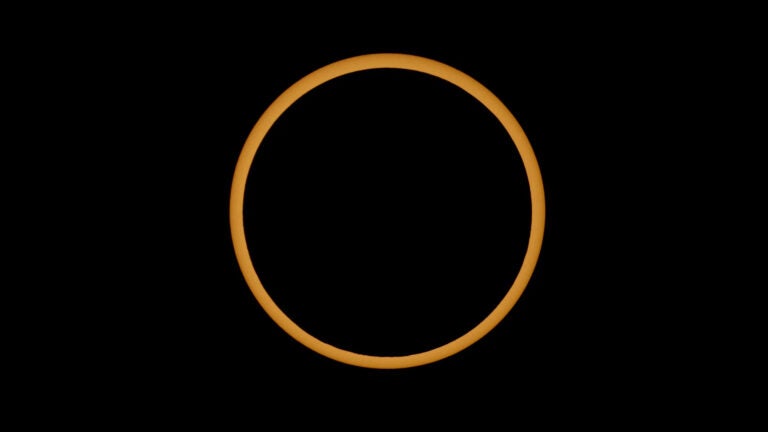How do solar flares unfold — and can we predict them?
If you think predicting weather on Earth is hard, try predicting weather on the Sun. Understanding when and why powerful solar flares erupt from the Sun’s surface, often spewing out torpedoes of charged particles and plasma, is one of most difficult challenges in astrophysics.
Now, a team of researchers in Japan have proposed a new, physics-based technique that can predict, in many cases, whether or not a solar flare is about to occur. Not only that, the technique can also pinpoint where the flare will erupt on the Sun, as well as roughly how powerful it will be. Though the research is still in the proof-of-concept stage, the plan is to incorporate the model into real-time solar forecasts within the next couple of years — perhaps helping protect us from the next Carrington Event.
“It provides a very important foundation, and it brings a bit more physics into it than the other methods,” says Astrid Veronig, a solar physicist at the University of Graz who was not part of the new research, but wrote a commentary accompanying the article’s publication in Science on July 30.

What we can learn from the life cycles of stars? Astronomy’s free downloadable eBook, Stars: The galaxy’s building blocks contains everything you need to know about how stars live, die, and change their galactic homes over time.
Stellar kinks
As the hot plasma of the Sun churns and roils, it twists our star’s magnetic field into tighter and tighter configurations, storing energy like a knotted rubber band. These pretzels of magnetic field leave their mark in the form of sunspots — dark, slightly cooler patches on the Sun’s surface where the coiled magnetic energy suppresses sunlight.
These active regions sometimes produce flares, or intense eruptions of energy and light, which can send charged particles and radiation surging through the Sun’s outer atmosphere and through the solar system. Such coronal mass ejections (CMEs) can threaten the infrastructure humans have built on and around Earth, like power grids and satellites. For this reason, many weather and space agencies across the globe produce forecasts of solar flares.
But predicting solar weather is still a work in progress. A study from last year that compared over a dozen forecasts from agencies around the world concluded that “[n]one of the operational methods are exceptionally good.” In fact, a few of them failed to consistently perform better than an algorithm that made random guesses.
However, these methods are not informed by physics simulations, but rather various ways of quantifying how knotted a region of magnetic field appears in observations — an indication of how much flare-fueling energy is being stored. It’s a bit like waking up to a hot, muggy, sunny day and knowing the conditions will be ripe for a thunderstorm to form. But just like predicting thunderstorms doesn’t always pan out, predicting solar flares isn’t as straightforward as it seems. You might be able to identify that the conditions are right. “But will it really make [a flare]? Will it make a big one? There it’s getting more difficult” to predict, says Veronig.
Hunting for flares
To tackle the challenge of predicting solar flares, the Japanese team’s new technique identifies the seed of a flare by looking for the conditions that are most likely to trigger one. They hypothesize that the most likely locations for flares to form are where two arcs of magnetic field lines are both close and roughly parallel to one another. In static conditions, this is a stable configuration. But if they get perturbed, the field lines of the two arcs can begin to merge, triggering a runaway process called magnetic reconnection. During this reconnection, the morphing magnetic field can release explosions of energy, like knotted rubber bands finally snapping.
Whether or not this happens depends partly on the conditions in the Sun’s outer atmosphere — or corona — high above this site of reconnection. “The overlying magnetic field plays a double role,” team leader Kanya Kusano of Nagoya University explained to Astronomy. A strong overlying field with a lot of magnetic energy tends to suppress such runaway reconnection events from starting. But if one does form, look out — all that energy becomes fuel for the flare as it rips outward and into the Solar System, like a thunderstorm feeding on energy in the atmosphere.
To identify where a reconnection seems to be brewing, the team constructs a 3D computer model of the Sun’s magnetic field over active sunspot regions. The model is based on satellite observations of the surface magnetic field, but extrapolated via simulations of the Sun’s corona. Next, they compare the amount of twist in the magnetic field to the strength of the overlying magnetic field to determine how much of a nudge the site needs to trigger a runway reconnection event. Kusano likens it to analyzing a snow-covered mountain slope to find the point that requires the least disturbance to trigger an avalanche.
The team was also able to identify a critical threshold for a parameter in their model, called kappa, that signals whether a flare is imminent — as well as predict roughly how strong the eventual flare will be based on the strength of the overlying magnetic field. “That’s a very neat thing, to put this all together,” says Veronig.
The team tested their so-called “kappa scheme” on roughly 200 large groups of sunspots from 2008 to 2019, seven of which resulted in large flares. The model successfully predicted six of the seven flares, giving early warning time of several hours to 24 hours. In each of those cases, the flare occurred at or near the site predicted by their model. Of the 198 sunspot groups that didn’t produce flares, the model predicted only three false positives.
Forecasting forecasts
Kusano’s team’s paper “seems an impressive piece of work to me,” Bin Chen, a solar physicist at the New Jersey Institute of Technology in Newark, tells Astronomy.
It’s too early to definitively know whether the method will be more reliable than existing methods when it’s up and running in real-time, says Veronig. But the fact that it’s physics-based means that even the cases where it fails are interesting, because they may indicate that a different magnetic configuration is present.
Kusano says he aims to incorporate the model into an operational forecast within one or two years. However, he says the main challenge is getting access to enough computational power, as the models require supercomputers to run.
Electrons in a bottle
While Kusano’s team provides insight into the initial trigger of solar flares, this week, Chen and his colleagues reported the most detailed look yet at what happens during a flare, as it gathers and unleashes energy throughout the Sun’s corona. They obtained these measurements with the Expanded Owens Valley Solar Array (EOVSA) near Big Pine, California, which had just been commissioned in September 2017 when a particularly monstrous flare went off (one that was also included in Kusano’s study).
The work, published in Nature Astronomy on July 27, is the first time researchers have been able to measure the strength of the magnetic field of the flare’s “central engine,” the region where the runaway reconnection takes place. Surprisingly, Chen says the measured profile “matches beautifully” with the standard solar flare model proposed decades ago.
They also find that at the bottom of this region, the magnetic field is shaped like a bottle — a structure that naturally traps and accelerates charged particles. This is likely responsible for accelerating electrons from the flare to nearly the speed of light.
The two studies are generally consistent with each other, Chen and Kusano say. The double arc configuration — which Kusano thinks is responsible for triggering most large flares — could naturally give rise to a bottle shape as the flare unfolds. And Chen’s first-of-its-kind direct observations of coronal magnetic fields could in turn improve the simulations that Kusano uses to extrapolate them.
Still, Chen cautions, it’s impossible to tell what triggers flares based on their data alone. Veronig says the double arc idea is “for sure one possibility,” but notes that there could be others as well. To put it another way: “Flares come in many flavors,” says Veronig.

